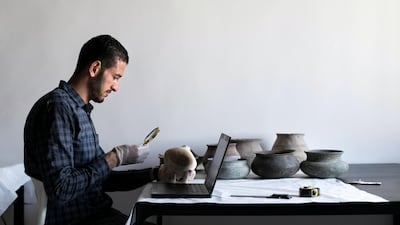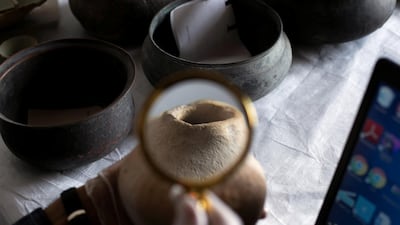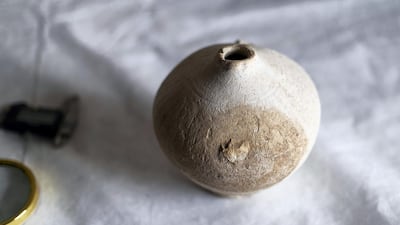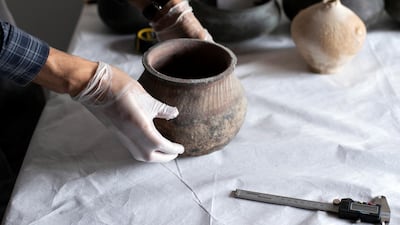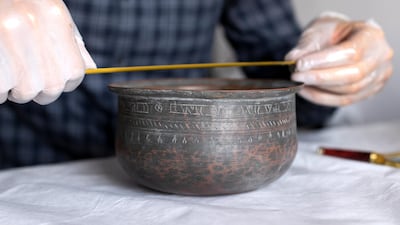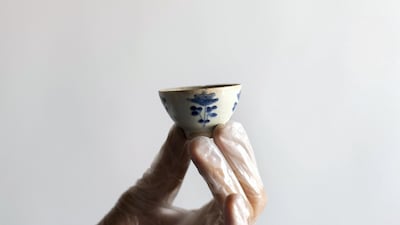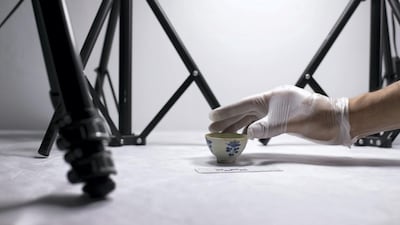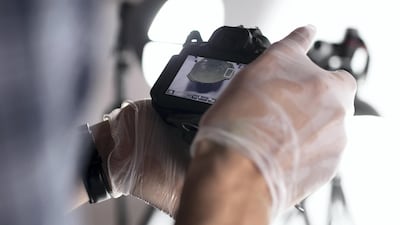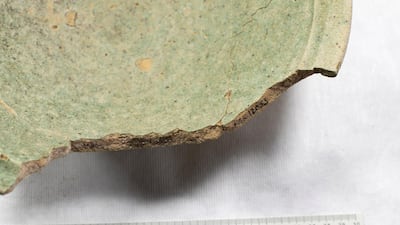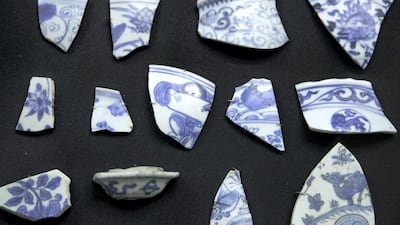Thousands of archaeological finds have been restored and documented as part of an ambitious five-year project to piece together Ras Al Khaimah's rich history.About 20,000 unique artefacts unearthed in the emirate - many found to be more than 4,000 years old - have already been examined and identified by keen-eyed experts at Ras Al Khaimah’s Antiquities and Museums Department during a two-year period.
The team tasked with digging into the past aim to review 90,000 ancient artefacts by 2022 in order to give a true reflection of centuries of history.
“These pieces and objects tell a great story about the history of the emirate and the country in general and the relationships with other countries,” said Ahmed Al Tuneiji, director general of the Antiquities and Museums Department.
“The project is very essential as every piece holds valuable information about our culture, ancestors and history,” he said.
Many of the items were discovered 30 years ago at archaeological sites across the emirate but, with scant information about them available, the department decided to launch its ambitious mission.
A number of objects of historical interest have also been donated by everyone from members of the public to Ras Al Khaimah royalty.
Pottery objects, jewellery, weapons and tools are among the intriguing haul documented so far.
“The documentation plan will cover about 90,000 artefacts in the department. Our team has finalised the documentation of 20,000 pieces and will need three years more to complete the process,” said Mr Al Tuneiji.
The head of the collection unit said that some pieces take only an hour to be assessed, while others must be examined closely for more than a week.
“It is a very sensitive process as many of the artefacts stored in the department have not gone through a proper documentation process and this project will focus on that,” said Ismail Draz.
“I joined the project last year and we still need around three years to document the 70,000 artefacts left as part of the plan,” he said.
“The artefact go through different phases of identification, analysis and then documentation. Some take an hour, others take a week depending on the object's condition and type,” he said.
“We take photos of the object, analyse it using electronic microscopes and X-ray beams, take it for restoration if needed and then send it back to where it is stored,” said Mr Draz.
He said that many objects can be identified by comparing them to other similar pieces.
“We can know which century the object represents by analysing its structure, material and compare it with other similar artefacts,” said Mr Draz.
“Then on an excel sheet we add the photos of the artefact, its number, the material it’s made from, a description of the object, the place where it was found, add comments about the restoration process and any other remarks.”
4,000-year-old carnelian beads were also documented during the project along with hand-made pots, arrowheads and coins dating back to the 18th century.
Pieces of porcelain were also among the artefacts analysed in the project.
The rare Chinese porcelain was discovered following excavations which began in 2017 and were jointly carried out by the Palace Museum in Beijing and the antiquities department.
The blue and white shards date from the Yuan Dynasty of 1271 to 1368 and highlight the extent of China’s trade with the region through the Middle Ages.
“The age of the artefacts and the information that it provides us with are very unique and valuable that tells us a lot about the culture of the area and its relationship with other counties such as China, Egypt and India,” said Mr Draz.
Some of the newly documented artefacts will be displayed at the National Museum of Ras Al Khaimah, located in a fort that was home to the emirate's ruling family until the 1960s.
The fort was converted into a museum in 1987 and boasts an array of rooms showcasing a treasure trove of exhibits.
